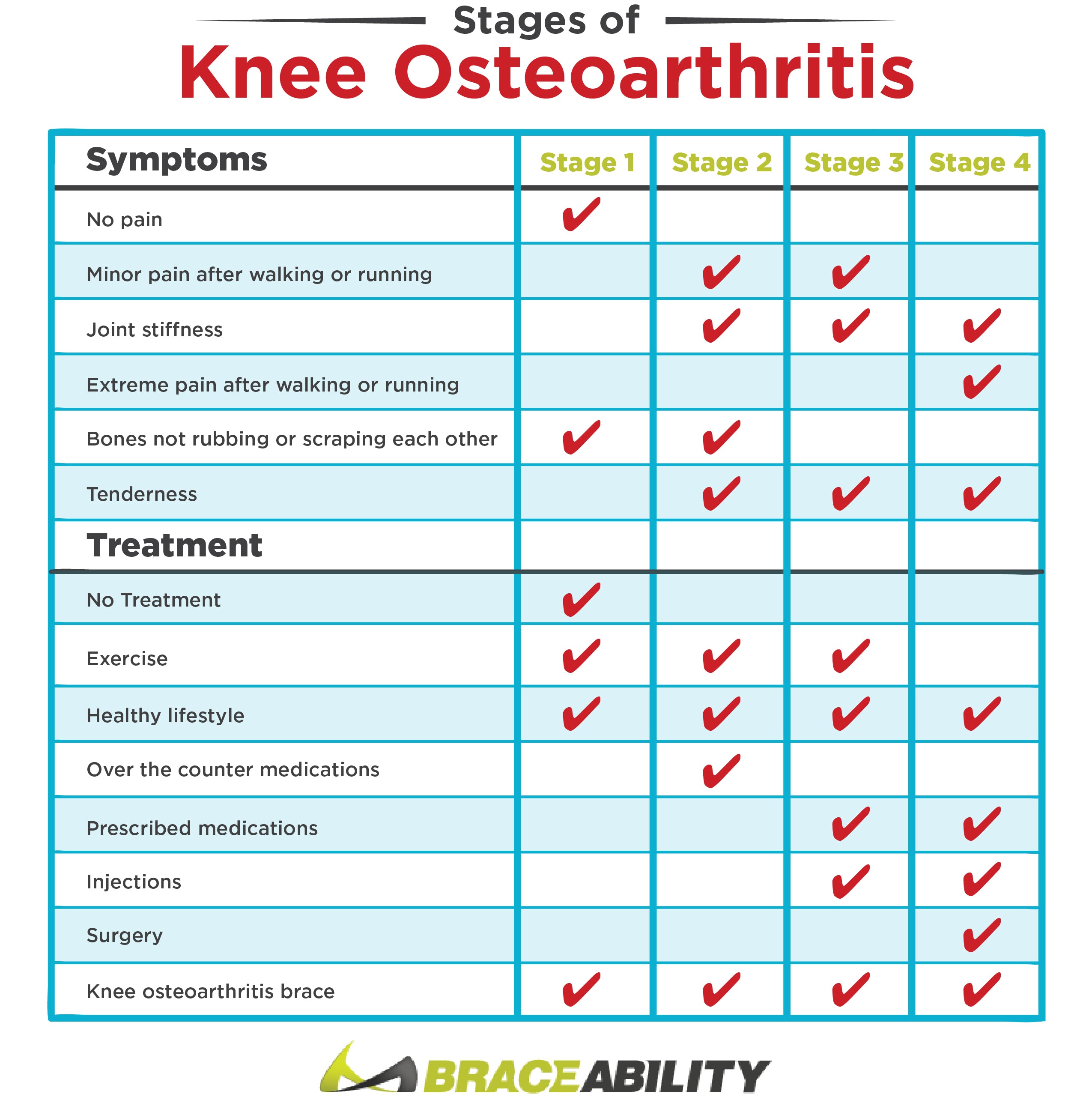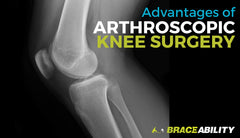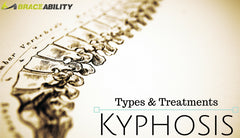What Stage of Osteoarthritis Are You In?
Osteoarthritis, or OA, is the most common form of arthritis, affecting millions per year. This condition is commonly known as a wear-and-tear arthritis of the knee. Experts say that as generations are living longer, nearly everyone will experience some degree of knee OA at some point in their lifetime. Throughout the four stages of knee OA, the cushioning between the joints known as cartilage wears away. The top layer of cartilage essentially breaks down and wears away, allowing the bones under the cartilage to rub together. This can cause a great deal of pain, swelling, loss of mobility in the knee joints, and can also lead to the formation of bone spurs.
Another cause of knee osteoarthritis is known as secondary knee osteoarthritis. This type of knee OA is not caused by wear-and-tear or old age, but rather a specific cause for weakening the joints. Secondary knee OA commonly affects individuals at an earlier age, developing between ages 45-50. Specific causes that can lead to secondary knee OA include injury to the knee, obesity, genetics, inactivity, or other joint weakening causes.
You may be experiencing the signs and symptoms of knee osteoarthritis. Once you determine you have osteoarthritis of the knee you may want to know what symptoms you may continue to experience and how you can treat them. It may be hard to determine what stage you are in, so take a look at the chart to help. The following are just a few of the symptoms most people encounter when diagnosed with knee OA:
- Stiffness in the knee joint, possibly worsening in the morning or after resting for long period of time
- Swelling or tenderness of the knee area
- Weakness or buckling in the knee
- May be difficult to bend or straighten the knee
- Everyday activities may seem difficult, such as climbing stairs, walking, etc
Knee osteoarthritis can be sorted into four different stages, all having different symptoms and treatments for each stage. Stage 1 is the least severe, and stage 4 is the most severe of the four stages.
Knee Osteoarthritis Stage 1
The first stage of knee osteoarthritis involves minor bone spur growth in the knee. Usually, you do not experience any pain or discomfort considering there is very minimal wear on the knee joint at this time.
Early osteoarthritis treatment includes staying active and trying not to overuse the knee. Any exercises that can strengthen the knee would be beneficial at this time. Also, maintaining a healthy lifestyle and eating right can help to strengthen the bones. Those who are overweight should try hard to lose as much weight as they can. Having extra body weight puts even more pressure on the knees and may cause more damage in the long run. Check out the
Knee Pain & Obesity blog for more information on how obesity can negatively affect our knees.
Knee Osteoarthritis Stage 2
This is more of a mild stage of OA, here is where you will start to see symptoms of knee osteoarthritis. Bone spur growth will start to occur during this stage, but the cartilage will remain a healthy size. This just means that the space between your bones is normal and the bones are not rubbing or scraping against each other. There may be tenderness in the knee area. The synovial fluid is still present, which helps to reduce friction and increase movement.
During stage 2, it is recommended that you talk to your doctor. Some patients may find relief in taking over the counter medications such as Tylenol or Ibuprofen. Overweight patients should consider starting a healthier lifestyle and exercise regularly to strengthen the joints and muscles. Some good exercises would be aerobics, strength training, or even walking. All these activities will help strengthen the muscles around the joint. Braces and wraps can be very helpful at this stage if you are participating in physical activity. BraceAbility offers many
knee osteoarthritis braces to help the pain.
Knee Osteoarthritis Stage 3
During this 3rd stage of OA, the cartilage between your bones begins to narrow causing more damage to the knee. This is known as a moderate stage of knee osteoarthritis, you may start to experience more pain and discomfort during your usual everyday activity. It is possible that when running or walking you will experience more extreme pain; the pain may also occur when kneeling or bending. After sitting for a long period of time, you may start to notice that your knee is very stiff. It is important to stay as active as you can doing the exercises that your doctor has assigned.
Stage 3 is when the osteoarthritis is getting much more serious than before. There are a couple different options that your doctor may talk to you about when dealing with stage 3. The first treatment your doctor may suggest is prescribing you pain medications such as codeine, oxycodone, or propoxyphene. It is important to know that these medications are not recommended for long-term use due to increased tolerance and dependency you may exhibit on them. In cases where nonpharmacological therapies fail, a Cortisone injection may be the next option to reduce pain. Cortisone is a steroid that is produced naturally by the body; it helps to relieve pain caused by knee OA once injected near the affected area. Both of these treatments can be effective for some time, however, exercising, eating healthy and purchasing an
OA knee brace are all effective ways to manage knee OA.
Knee Osteoarthritis Stage 4
This is the most severe stage of knee osteoarthritis, at this point, the space between the bones is severely reducing. The cartilage in our knee is getting to the point where it is barely there, and you are experiencing pain consistently. During this stage, one should expect to experience great pain and discomfort when walking or moving the knee joint at all.
During stage 4, the best treatment recommended by your doctor may be bone realignment surgery, also known as an osteotomy. This procedure will essentially shift the weight of your body away from the points with greater bone spur growth and damage. Another surgical option during the 4th stage is a total knee replacement, known as arthroplasty. This surgery is last resort for extreme cases of knee osteoarthritis and pain.





